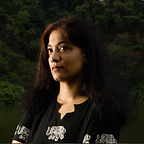A beautiful ceremony brings back memories of a knowledge-centered civilization
There is nothing more touching than being 10,000 miles away from one’s motherland and still preserving her ancient rituals with dedication. I was invited to the Upanayana ceremony of a young boy whose parents hail from the Indian state of Karnataka. I had met him on a couple of occasions but not really noticed him. Today, at the completion of all the rituals, I saw a glow on his face that made me realize yet again, why the ceremony is regarded as the second birth in Hindu traditions and the child becomes a Dwija or twice-born.
Ancient India had many rites of passage called Samskara and one of the important ones which mark a child’s entry into education is called Upanayana. It was typically performed for children between the ages of 8 and 12. After this ceremony, a child would set out to study under a Guru (or many Gurus) for several years in order to gain mastery over a variety of subjects and return home only after passing the final examination. The child who embarks on such a period of study is called Vatu. For more details about the educational heritage of India and how it impacted the world, please look up my book here if you live in India and here if you live in America. The book is also available on the Amazon websites of other countries.
